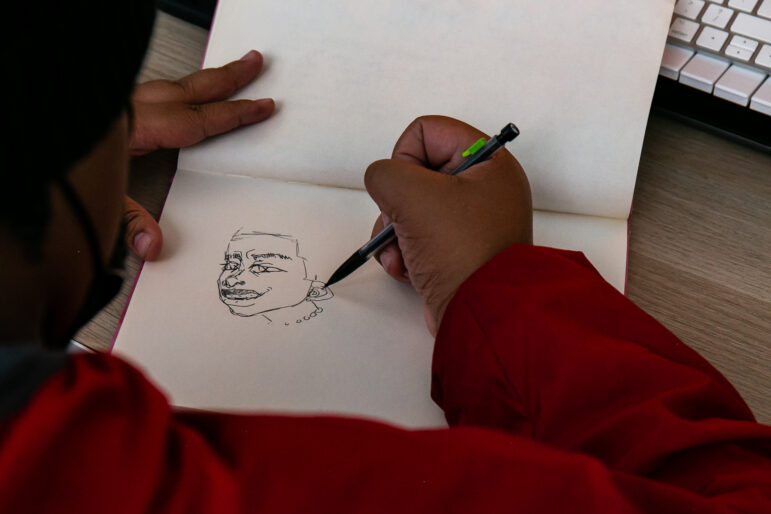“New York City’s Department of Education recommends schools spend just $80.15 per student on arts education—yet school leaders can use that money for other classes and programs, often resulting in the total elimination of arts programming in a school.”

Adi Talwar
A student at the Harlem School of the Arts.In March, I stood with New York City Council Finance Chair Justin Brannan, educators and students from a local school in Bay Ridge to announce the launch of Support for Arts Instruction, a new citywide program that will introduce thousands of children across the five boroughs to the power of the arts and strengthen pathways for sequential arts instruction.
The smile and excitement on these children’s faces was irreplaceable. They told me that their arts classes taught them how to work together and listen to each other’s ideas and speak with confidence—a true feat for anyone, but especially for elementary school students.
As an educator, I’m confident this seed money will not only pay dividends for the students and their families themselves, but also will serve as a foundational down payment on what the mayor and the City Council can negotiate this year: a much bigger, much bolder arts education framework, one that is well-funded and permanent.
Arts classes, from theatre to creative movement to literary arts, are critical to supporting the whole child: mind, body, and soul. That’s why I, and so many advocates, artists, teachers, and elected officials are pushing to baseline resources—which includes the hiring of certified arts teachers in every school—in this year’s city budget for arts education.
The COVID-19 pandemic has been tough on students, leading to painful isolation, learning loss, and social-emotional development issues. We see it reflected in their test scores: less than 38 percent of third through eighth graders are now proficient in math, compared to about 46 percent of students before the pandemic. This is a massive problem that needs to be addressed with urgency and immediacy. We must invest now in the arts as an evidence-based solution to supporting our city’s students.
Research shows us that arts education is among the most effective educational tools to engage students in learning experiences. According to a 2011 study from the President’s Committee on the Arts and the Humanities (PCAH), “integrating arts with other subjects helped raise test scores and improved student learning measures overall, and especially for those in low-income communities.”
And not only that—it keeps students in school too. A 2021 report from the American Academy of Arts and Science cites research showing that students enrolled in arts programming have better attendance rates, and art education has a significant effect on students with a history of chronic absenteeism.
We also need to recognize that arts programs aren’t just about school. Arts programs are workforce development. They can improve mental health. They are powerful, safe spaces that offer young people constructive environments to build community and find joy after-school or over the summer.
So funding for youth arts programs shouldn’t just come from the schools’ budget. We must start funding arts education through other agencies, like the Department of Youth and Community Development and the Mayor’s Office of Criminal Justice so there is a clear integration of arts programming throughout the city. The arts don’t just happen inside the four walls of a classroom—they are everywhere.
And if we want to fully invest in our students, we must ensure consistency in funding. New York City’s Department of Education recommends schools spend just $80.15 per student on arts education—yet school leaders can use that money for other classes and programs, often resulting in the total elimination of arts programming in a school. That per student number should be raised to at least $100 and remain dedicated to the arts, enabling schools to hire certified arts teachers and partner with our city’s world-class arts and cultural organizations.
As our young people face multiple crises, we cannot continue to fail them by not addressing all of their needs, whether they be educational or social-emotional. Exposure to the arts can check all of these boxes, which makes it an efficient and critical investment.
It’s not too late to seize this opportunity for a new generation of New Yorkers by ensuring every public school student gets the arts education they need to thrive. Because it starts with the arts.
Kimberly Olsen is the executive director of the NYC Arts in Education Roundtable.








